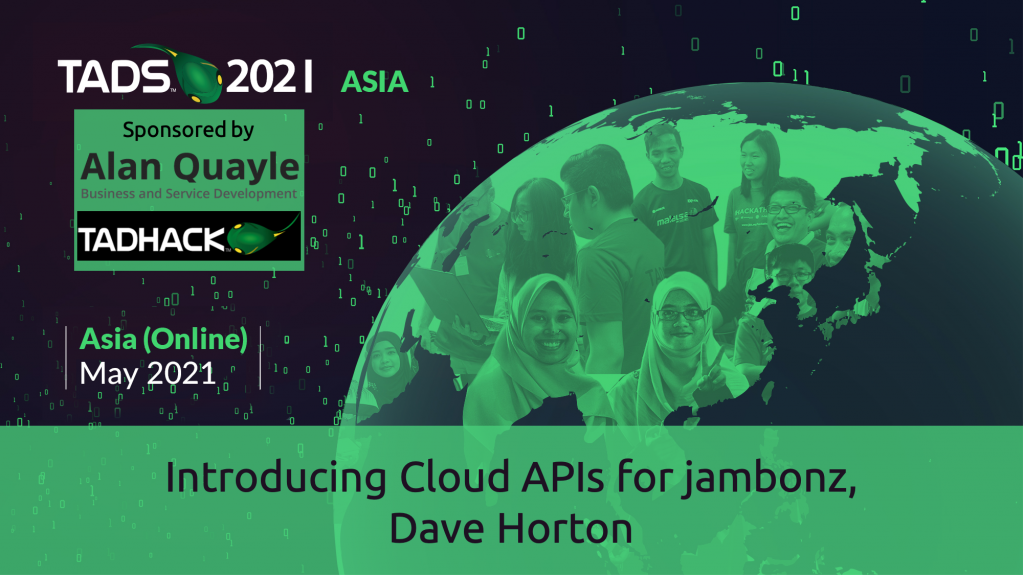Video
Outline: Introducing Cloud APIs for jambonz
Dave Horton: Creator of jambonz (open source CPaaS) and drachtio (open source SIP server and Node.js application library)
jambonz is the open source CPaaS designed for the needs of communication service providers and available under the MIT license to run on your own or hosted infrastructure. jambonz allows service providers to easily plug in their own carriers and speech services, and is designed specifically for privacy-conscious service providers that want to minimize the exposure of their customer’s data to third-party platforms.
In this talk, Dave will review the key features of jambonz and introduce jambonz cloud APIs, which are currently in private beta and scheduled for public release at the end of Q2. Using the cloud APIs via the hosted jambonz service is a great way to get familiar with the platform and start running some traffic. Dave will walk through the complete process of provisioning a service and bringing up applications using the cloud APIs.
Presentation Review
You can ask Dave any questions about this presentation in the comments section of this weblog, or contact him directly with the info at the end of his presentation.
Dave kicks off by referencing Dan Jenkin’s excellent TADSummit EMEA Americas 2020 presentation, “The Difference Between Your Project Succeeding or Burning To A Crisp Is Actually You.” Where Dan highlighted the importance of taking a leaf out of Element‘s book – make it extremely simple to sign up to the project’s cloud platform. And that’s just what Dave has done.
I love the frank review Dave provides on the challenges of completing this “last mile” of the project. It’s not as fun as building the core, and it has a significant opportunity cost and out of pocket expenses. This is often why commercial organizations sweep in and use a project to help create multi-tens of billions businesses with little to no kick-back to the project.
Dave’s career history of starting on the commercial / closed-source side of programmable communications for the first half. Then moving to open-source for the later half. Helps him understand the importance of this last mile investment.
The demo Dave provides of setting up Jambonz is amazing, just watch the video. In just a few minutes he has a full voice-centric CPaaS operational and running live services. Having helped many companies through this process over the years, this is revolutionary.
Please join Dave’s private beta of Cloud APIs for jambonz by contacting him here. You’ll be glad you did.
Thank you Dave for the privilege of helping announce to the world the availability of Cloud APIs for jambonz. This is exciting and disruptive to the programmable communications market.


Thank you Dave for a truly impressive demo:
1) What are some of the charging models you’re thinking about for Cloud APIs for jambonz?
2) Focusing on voice makes perfect sense, you can not do everything at once. But is it video or messaging next?
3) I love the analogy of: spilling the parts on the floor and saying, ‘isn’t it great?’ It’s always a challenge because the project is modular, you enable people to have complete control over their platform’s roadmap using your project, so they can operate at internet speed not telecom speed. As Cloud APIs for jambonz evolves, do you see it enabling people to play with some parts within the Cloud API service?
1) I’m starting with a very simple model — charging for application processing capacity, measured by how many simultaneous calls someone wants to support. On the plus side, this is a pretty well-understood metric in the telco space and, frankly, simple to implement. It probably won’t suit some customers uses cases (particularly those with bursty traffic), so its possible I will end up somewhere different, but to start with I think this is a sensible model to put out there and then start to get feedback on how to best meter the service in a way that supports customers different value propositions.
2) Messaging is in the works, and I already have some providers saying they will contribute the messaging APIs for their networks, which is great. I do see video support coming down the road, but I want to build off a solid base of successful voice deployments first so that the brand becomes known for quality implementations. Then when I add video people will positive expectation that it’s been done right and they’ll want to try it out. But I am looking forward to working on video!
3) Yes, definitely. Some of the information I want to get out there soon is an on-boarding tech talk for folks that want to contribute to the core of jambonz, which is pretty slim and trim in terms of lines of code (the last time I did a count on the core stuff it was less than 10K loc) so its going to be quite easy for people to add new commands to the json webhook “language”. I’m keen to get that going because I think its extensibility will be a big part of its success and something the open-source model offers its customers that proprietary CPaaSs do not.